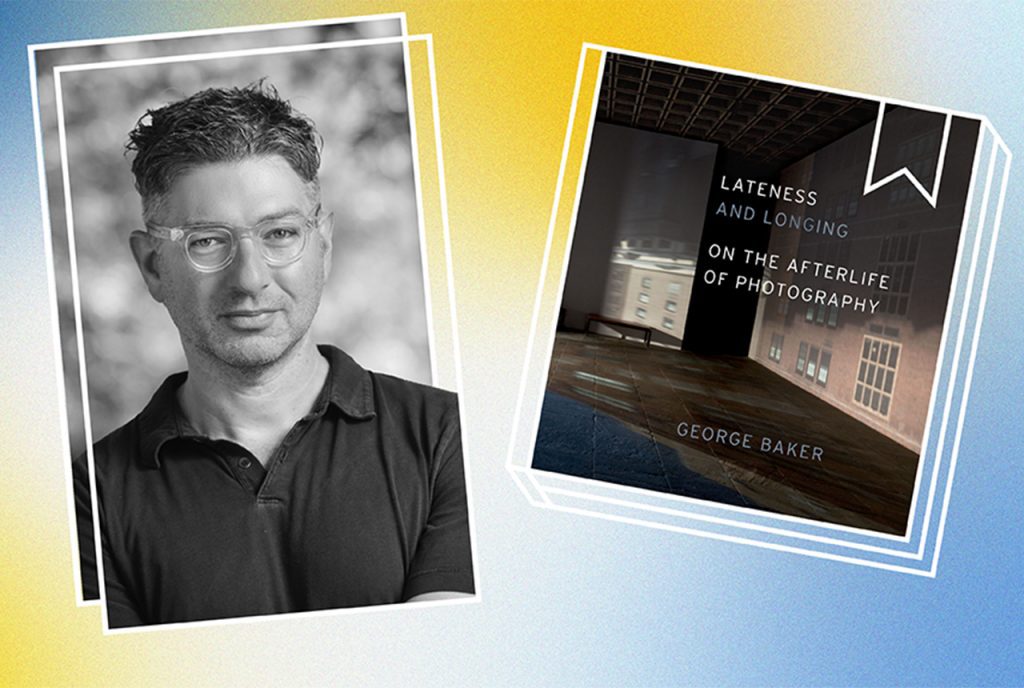On the ‘Afterlife of Photography’: Q&A with art historian George Baker

Todd Cheney/UCLA (Baker photo)
UCLA art historian George Baker wanted to understand how photography “is being altered, transformed and expanded today.”
| February 16, 2024
When George Baker was asked to write an essay on photography for an exhibition in 2008, unbeknownst to him, he had begun the journey toward completing “Lateness and Longing: On the Afterlife of Photography.”
In it, the UCLA art history professor sets out to investigate how a generation of women artists is invigorating photography in the age of digitization by returning to earlier, incomplete or unrealized moments in the field’s history.
For the first installment of the UCLA College’s Bruin Bookshelf Spotlight, Baker shares a snapshot of the approach and inspirations for his latest work, how a resurgence in analog photographic techniques is expanding the landscape of modern photography and why the arts at UCLA and across Los Angeles continually inspire Bruins.
What inspired you to write this book?
I have been an active art critic for almost 30 years and have been having longstanding dialogues with contemporary artists. Many are now friends who challenge me with what they are making, what they are reading, what they are thinking about in the culture today. These dialogues were the direct impetus to the writing of this book.
An artist with whom I am close, Paul Chan, sent me an essay to read by the philosopher Theodor Adorno on the “late style” of the composer Beethoven’s final works. Why was my friend inspired by this difficult text? It was motivating a series of his new pieces. Then, when I read the essay, I found immediately that it connected to the writing I was doing on tracking and understanding changes in how contemporary artists use photography. The critical idea of a cultural “lateness” seemed to align with the situation of photography now.
And that is the other inspiration for the book: photography itself.
Photography has never been more a part of our daily lives; almost all of us carry sophisticated digital cameras in our pockets everywhere we go. Yet there is the wide-ranging understanding that, perhaps, the old ideas around photography have now “died,” and that we have lived through a fundamental change in what photography is and can be.
I wanted to write a book that, in a strange and counterintuitive way, would dive into the changes around photography we have been living through. I wanted to write a book on artists who continue to use the old analog photographic techniques, but use them in paradoxically new, even radical ways. I wanted to understand photography and how it is being altered, transformed and expanded today. All of the art projects explored deeply in my book are made by women artists; there is a feminist story here about photography too that I wanted to explore, a critical use of photography that is essentially new.
How does “Lateness and Longing: On the Afterlife of Photography” fit into the ongoing conversation around photography?
My book hopes to be in a dialogue with the many extraordinary texts that are generally understood to amount to the “theory of photography.” The writings on photography by philosophers and critics from the past, like Walter Benjamin or Roland Barthes, are central and my book hopes to move the conversation on photography forward from their ideas.
And I lean on a series of thinkers and books that are not themselves about photography, but allowed my thinking to develop in this realm, For example, Edward Said’s last unfinished book on “lateness” and late style, the extraordinary literary critic Svetlana Boym’s “The Future of Nostalgia,” classic cultural texts like Susan Stewart’s “On Longing,” ideas from recent art criticism such as Hal Foster’s notion of cultural “aftermath.” These writers and books, among others, form what I would call the productive constellation from which this book emerges.
What role has the UCLA College played in your research and scholarly work on photography?
For 20 years, the UCLA College has been the testing ground for my thinking on photography. I regularly teach its history as one of my main lecture courses and offer smaller seminars on photography for undergraduates, graduate students and art students alike.
UCLA is also a “photography” university and Los Angeles, similarly, a photography town. What I mean is that when I arrived at UCLA, I found myself immediately inserted into a community of major thinkers and artists, themselves teaching photography. And I had little idea — until I moved to Los Angeles — how passionate the photography community in this city is.
It is said you don’t really know what you are wishing for sometimes, until it befalls you — that is how I feel about having arrived at UCLA as an art historian, art critic and teacher. This place has grounded, supported and transformed my work in ways I am sure I do not even myself fully understand.
